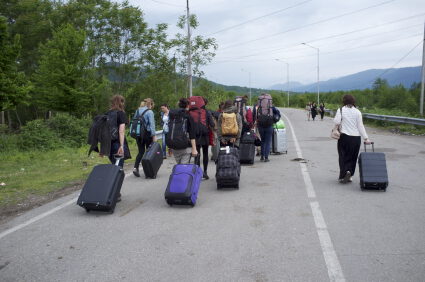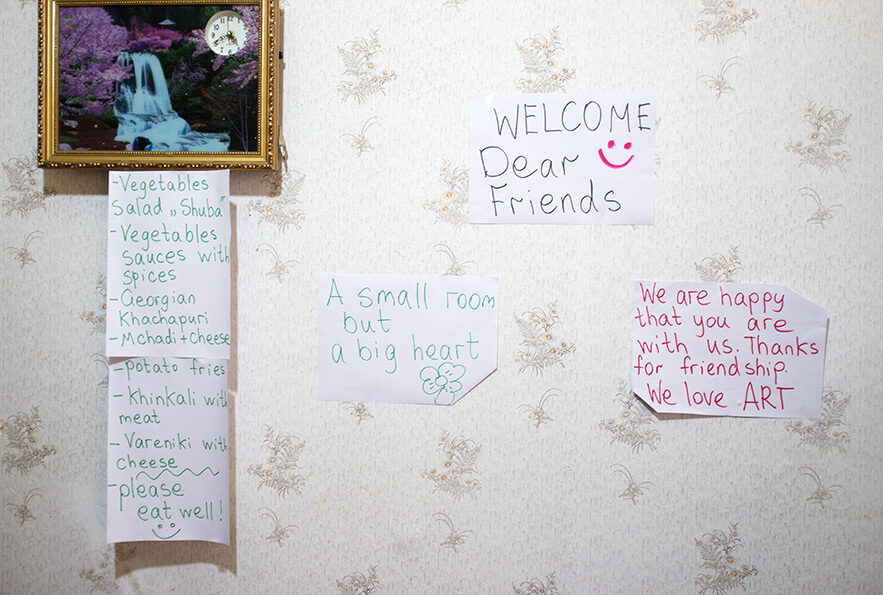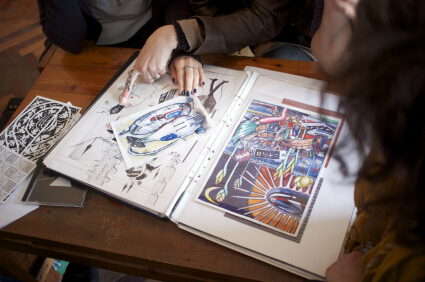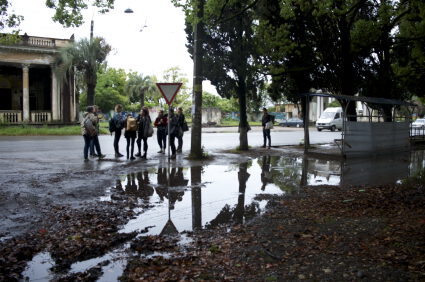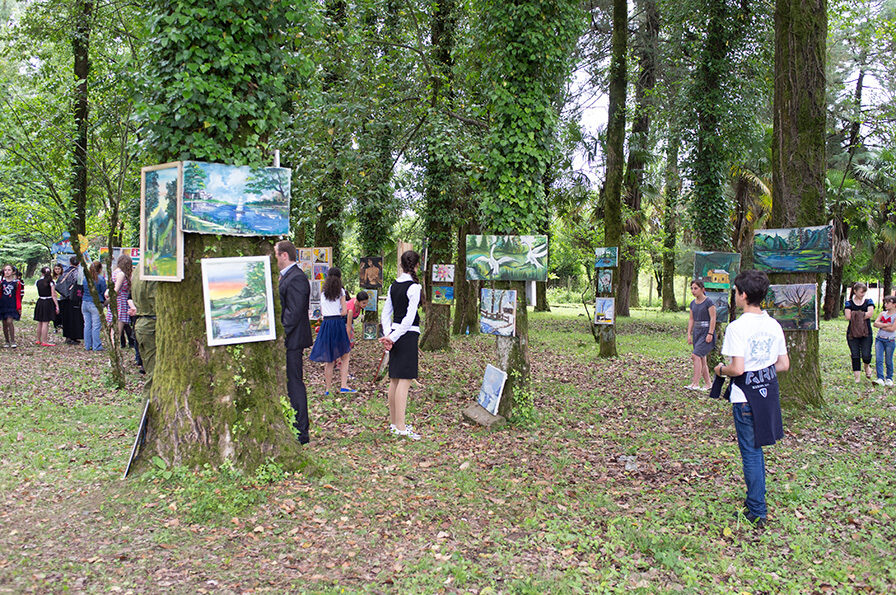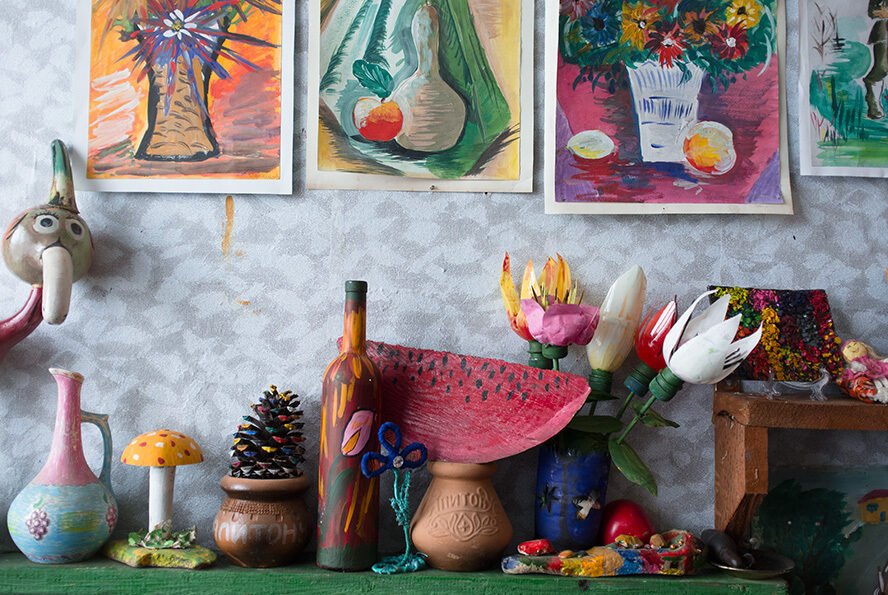Connecting Spaces
The town of Sukhum/i on the Black Sea was a flourishing holiday resort in Soviet times. Today it is the quiet centre of a disputed region; for the Georgians, a renegade part of Georgia, for the Abkhaz, the capital of an independent Abkhazia¹. Approximately 240,000 inhabitants of the region have been living under difficult economic conditions and with severely restricted mobility for twenty years. In particular the exchange with Tbilisi is almost impossible in this unresolved conflict situation. What preoccupies artists in the field of tensions between Russia and Western Europe? And what role can fine art play – given the diversity of art concepts – as an open space for an exchange of ideas beyond global power politics?
The project Connecting Spaces started in May 2014 with a workshop in Sukhum/i. Initiated by Dagmar Reichert and supported by Adgur Dzidzaria and Maria Madalena Z’Graggen, 24 young artists from Basel and Sukhum/i worked together for two weeks and developed ideas for their work.
The project continued in November 2014, when the workshop participants from Sukhum/i travelled to Basel to present the works that had been completed in the meantime at a joint exhibition. Other artists from the Southern Caucasus joined the group for an exhibition at the Klingental exhibition space in Basel. The exhibition took place as part of the Basel REGIONALE 15 and also in the context of the programme accompanying the OSCE Ministerial Council Conference in Basel coordinated by the organisation Swisspeace. In terms of content, the works in the exhibition dealt with public space and public sphere in the respective cities and societies. Here the term ‘public’ referred both to the material dimension of streets and squares, and to the communicative dimension of a sphere for encounter, criticism and dialogue.
Place and Year
Sukhum/i, Basel, 2014
Artists
David Bostanashvili, Elene Chantladze, Lado Darakhvelidze, Adgur Dzidzaria, Tatjana Ergunova, Galaqtion Eristavi, Constantin Gretsoff, Sara Grütter, Silas Heizmann, Marc Hörler, Sabina Kvarcheliya, Archip Sipa Labachua, Jemina Läubli, Céline Liebi, Sonja Lippuner, Julia Minnig, Deirdre O'Leary, Lali Pertenava, Philip Matesic und Linda Pfenninger, Aron Rossman-Kiss, Lea Rüegg, Aleksi Soselia, Beslan Tarba, Guram Tsibakhashvili, Manana Tsvishba, Tanja Weidmann, Natascha Nüesch, Koka Vashakidze und Maria Magdalena Z’Graggen
Curators
Annina Zimmermann
Asida Butba
Maria Magdalena Z’Graggen
Project Management
Dagmar Reichert (artasfoundation)
Partner Organisations
Sukhum Artist Union
Ausstellungsraum Klingental Basel
Hochschule für Gestaltung und Kunst Basel (hgk)
Swisspeace, Bern
Financial Contribution
Organisation for Security and Co-operation in Europe (OSCE) Task Force Switzerland
Swiss Federal Department of Foreign Affairs (FDFA)
¹artasfoundation would like to underline that its use of names and titles particularly in regards to conflict regions should not be understood as implying any form of recognition or non-recognition by the foundation or as having any other political connotation whatsoever.
